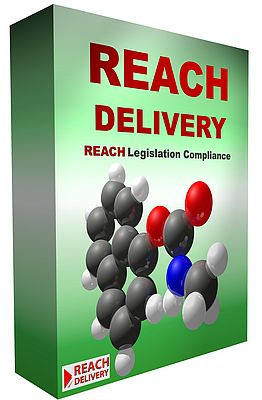REACH – the Registration the European Union regulation concerning the Registration, Evaluation, Authorisation and restriction of Chemicals aimed at promoting the safer use of chemicals has been in place for five years and several milestones in its implementation have already passed.
Almost a year has flown by since we saw the first phase of registration completed successfully, with manufacturers, importers and distributors of over 1,000 tonnes of chemicals a year registering their chemicals with the European Chemical Agency (ECHA). Since that time, the chemical industry has shifted its focus onto the next REACH landmark – REACH 2013 registration.
At the European Commission’s REACH Registration conference in September a new campaign - ‘REACH 2013 – ACT Now! was launched by the ECHA. The goal of the campaign is to ensure that chemical manufacturers, importers and downstream users to start preparing for the 31 May 2013 REACH registration deadline now. By this date, all phase-in substances manufactured or imported in the EU above 100 tonnes a year will need to be registered under REACH.
One of the notable factors about the 2013 registration is that a far greater number of SMEs will be affected. As the first registration phase focused on substances produced or imported in high volumes, smaller companies have not been as involved in the REACH process as some of the larger companies. However, this is about to change. SMEs will have to become more involved in REACH and most will have little experience of the REACH process. Most likely, they will also have less budget and fewer resources to handle the complexities and administrative challenges involved.
The challenges ahead for SMEs are widely acknowledged within the industry. Cefig’s Executive Director, Hubert Mandery has stated that whilst the industry wants to make REACH work, the legislation is complex and also acknowledged that companies are doing their utmost to comply and prepare to co-operate.
One of the other significant tools used by the industry to ensure safety levels, are the Safety data sheets (SDSs) that are distributed to customers at the time of shipment of chemicals. SDSs contain important information about chemical properties, as well as how they should be stored and handled. The level of information required by REACH to appear on the SDS has been extended so that the SDS and associated Exposure Scenarios (ES) can now be quite sizeable documents. And there are expectations for a large increase in the actual number of SDS and ES documents entering the supply chain as a result of both 2010 and 2013 stages of legislation.
To achieve REACH compliance any company importing and distributing chemicals to and within the EU will need to ensure the direct delivery of SDS and associated documentation to customers. They will also be responsible for keeping these documents and their customers up to date if there are any changes or clarifications.
Traditional methods of sending SDSs by either email or post won’t be considered robust enough to stand up to regulatory scrutiny. Email does not guarantee or record proof of delivery and does not monitor the status and confirm successful delivery. Post has the same problems as emails and both incur significant time and costs in administration and management. And there are no audit capabilities, sufficient to demonstrate compliance or to provide protection in the event of legal action.
One solution being adopted by an increasing number of companies, is to automate the entire SDS delivery process using REACH Delivery, an industry-wide SDS delivery service. This secure online service enables the electronic delivery, receipt, control, update, audit and tracking of SDSs in line with REACH. It automates the entire delivery process including the monitoring, tracking and reporting on all documents that are sent to customers and provides a delivery status for auditing purposes.
If there are any changes or clarifications to the SDS, then the new version is sent to customers and it replaces the previous version automatically. Organisations who use the system won’t have to then worry about out of date versions being in circulation and managers can rest assured that all employees are using the most up to date SDSs at all times. The system also stores all documents in an electronic database, allowing users a single consistent point of access for the latest version of a SDS.
As REACH affects companies throughout the world and similar legislation is now being considered in other countries, most significantly in the USA, the system has designed to meet the requirements of new international legislation as and when it is required.
There is no doubt that REACH compliance is a hugely complex issue for companies – particularly the smaller companies now gearing up for 2013 registration. However, automating the sending of SDSs in line with REACH ahead of time will get one of the big compliance challenges out of the way. Companies who act now and automate their SDSs processes will be alleviating some of the pressures they face so they can focus on gearing up for registration.
By: Malcolm Carroll, Director of REACH Delivery


















